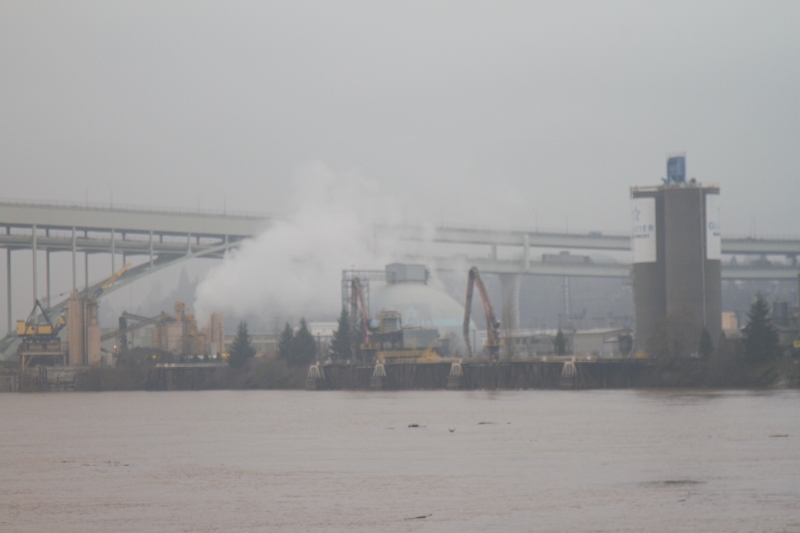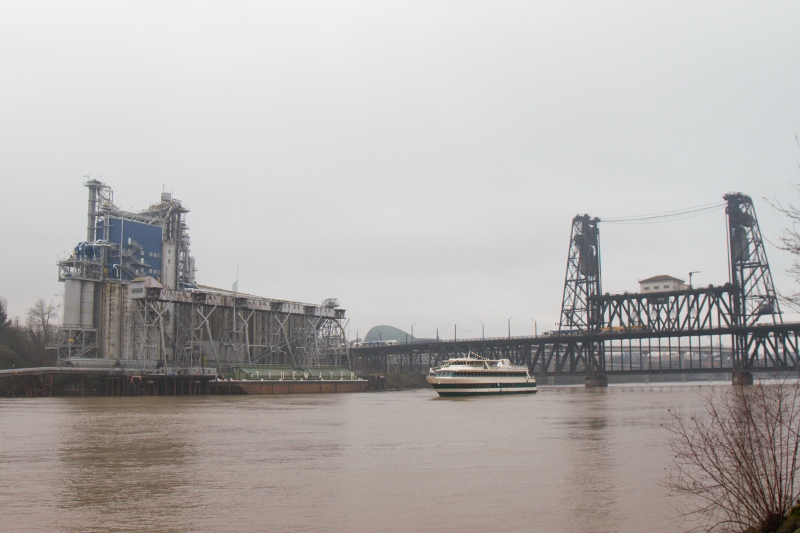
I was recently asked by Gracen Johnson (check out her site here) to elaborate on the possible future of suburbia. How are the suburbs likely to fare over time? This coincided with a city planner friend of mine who asked a more poignant question about the suburban community he helps manage. “What’s this place for?” If we can answer that question we might be able to get a handle on the possible trajectories of various suburbs.
For example, we all understand what a farm town is for. Small rural towns produce food. The people who live in the countryside are actively engaged in the business of feeding society. They take soil, water, plants and animals and convert it all into breakfast, lunch and dinner. For the people who want to live this way there are tremendous benefits: fresh air, open space, privacy, independence, a direct connection to nature, strong family bonds, tradition, and so on. Whatever else we might say about farm country we can be certain that it will carry on one way or another or else civilization will grind to a halt pretty quickly.
We also know what industrial cities are for. They take the raw materials from the surrounding countryside and transform them into finished goods. Grain becomes flour and bread. Timber becomes lumber, then homes and furniture. Iron ore and coal become machinery and power. Crude oil becomes gasoline, petrochemicals, and plastics. There are obvious trade offs for industrial workers, but for many people it’s a pretty good arrangement. If we expect to have manufactured goods in the future these cities will have to continue somehow.
The new post-industrial locus is a bit trickier to pin down. The service economy doesn’t actually produce any “thing” so the workforce is liberated to live just about anywhere in a way that farmers and factory workers can’t. Oddly, well educated highly paid people don’t actually spread out and inhabit a million cabins in the woods as you might expect. Instead they clump up in a handful of regions that provide abundant cultural amenities. At the same time the post-industrial economy exists in a physical world and all those people and electronic components rely on the underlaying farms, factories, and raw resources that support them. The so-called dematerialization of the economy still requires a serious amount of real “stuff” to function.
So what does this all mean for the suburbs? The nature of suburbia has always been consumptive rather than productive. People move to the suburbs in order to purchase and enjoy things: a spacious home, a good school district, security, a clean environment, more respectable neighbors, and so on. The majority of the commercial activity is actually in service to suburbia itself. The mortgage brokers, insurers, real estate agents, landscapers, school teachers, firefighters, orthodontists, pancake houses, and auto body shops are all there to help keep the suburbs humming along. But they’re all consumptive in nature. No one is making the tennis shoes sold at the mall or growing the oranges at the supermarket. This is compounded by the fact that the suburbs are maintained largely through debt. Private debt is required for all the mortgages, car loans, credit cards, student loans, and business loans while municipal bonds prop up many essential suburban government functions. The fact that many people don’t understand the difference between production and consumption is one of the big problems the suburbs are going to have to sort out in the future.
I’m going to get a lot of push back on this concept. I’m sure many of you think that your suburb is full of productive enterprises: the Krispy Kreme, the Jiffy Lube, the dozen Shell and Exxon stations, the Applebee’s, the Foot Locker, the Honda dealership, and the Kroger’s. But these are merely outlets for things that were produced elsewhere. Let me offer another example from my own life. I spent a chunk of my childhood in the San Fernando Valley in Los Angeles. Back in the 1960’s and 1970’s nearly everyone had some connection to companies like Rocketdyne, Litton, and General Dynamics. Those were the engines of the local economy for decades. And they did in fact produce real physical things. But they were all funded entirely by the federal government. Tax money was skimmed off the national productive economy (all those farms and factories) and then spent on missile guidance systems, satellites, and fighter jets. The same was true in Huntsville, Alabama and Marietta, Georgia. Remember what happened to all those places when the feds turn off the spigot during budget cuts? Money flowed in, not out. There’s a reason Peru doesn’t have a space program. The underlying national economy isn’t productive enough to support such extravagant government spending.
As the material abundance we enjoyed in the Twentieth Century tightens up suburbs will have to become much more efficient places that provide things the outside world needs and is willing to pay for. At the same time internal consumption and debt are going to have to be pulled back. That doesn’t necessarily mean a lower quality of life, but it does demand that suburbs retool and ask themselves, “What’s this place for?”
John Sanphillippo lives in San Francisco and blogs about urbanism, adaptation, and resilience at granolashotgun.com. He's a member of the Congress for New Urbanism, films videos for faircompanies.com, and is a regular contributor to Strongtowns.org. He earns his living by buying, renovating, and renting undervalued properties in places that have good long term prospects. He is a graduate of Rutgers University.





























Real suburbs are generally
Real suburbs are generally the living areas supported by the productive trading activity in the larger city nearby. Money is made in the productive industries there, and taken back out to the suburbs where those workers prefer to live. That's why they are sometimes called bedroom communities.
Many suburbs also do have many productive industries tucked around in them. Just because they aren't household names doesn't mean they aren't there bringing money back into the community. And sometimes, they are the the household names: the big companies of Silicon Valley, Nike, Microsoft, all suburban.
It seems strange to assume that suburban living is all "based on debt" which is unsustainable, any more than any other region. If all suburban households were hopelessly spending money they don't have and are doomed to default because their suburb isn't "productive", you'd think that banks would have figured that out by now and stopped making loans.
In short, the mistake you're making is thinking of cities and suburbs as segregated entities instead of an integrated system. Suburbs next to large productive cities can and will survive just as is. They are where people want to live when they leave work. Tell you friend that his public wants it to be a nice, safe place to live where things change slowly and the schools are good. Don't complicate it.
Fair enough
Points well taken.
My question is this: when the bulk of the population and commerce leaves the city for the suburbs and the inner city dies (Detroit) can the suburbs thrive without a healthy dynamic city center?
And would the suburbs outside of Boston (128 Tech Corridor) be as prosperous and productive as they are if there wasn't the culture and vitality of the inner city to spin off talent and money to the larger region?
Many tech workers in Silicon Valley live in San Francisco and make a reverse commute so they don't have to live in cul-de-sacs and eat bad Chinese food in strip malls.
www.granolashotgun.com
Suburbs
John,
You are vastly over-simplifing things --- as the commenter says, suburbs have only recently started decoupling from urban cores, and those that do are coupled to "Nodes" of density that are still perhaps "suburban" but resemble in some ways small towns of yore.
This site (New Geography) has a WEALTH of information on suburbs, in all their variations.
It is of course true what you state: it is a often a rule of thumb that an urban core has to be healthy in order for suburbs to be thriving --- but this was certainly not the case when I was growing up in Upstate, NY --- the urban cores tended to be scary, dirty, and vacant and the suburbs just fine.
And, for all the talk recently about certain suburbs around St. Louis --- many are thriving in a sort of "ring city" --- and the suburbs of Detroit are still rich and happy.
You cherry pick Boston --- true --- Boston's health has made suburban life as unaffordable for young families as down-town Boston --- that is not informative for this discussion.
Yes, there are SOME silicon valley folks who prefer to live in San Fran for "culture" --- but that has not been the main motive force for that --- the main one was that it was cheaper to move there sometimes --- much has been written about how this migration has driven out many "cultural" San Fransciscans, much like the working class was in the 80s. Now, many folks are moving to the least desirable "Levittown"-era postwar suburbs.
And, like in many places, the amenities are getting better in these suburbs; yes, even in the strip malls.
even millennials are getting older
There certainly are a lot of young people living in SF three or four to an apartment and taking the bus to Silicon Valley. They are in SF for the nightlife. However, the oldest millennials are now in their early 30s and while the youngest are still in high school, the generation is getting older. As they marry and begin to form families having your own home in a place with decent schools will become important.
It'll take awhile for the millennial generation to percolate through their youthful city stage, but they are being followed by something of a baby bust. In a decade we may see even more growth in Bay Area suburbs but less population wanting to live in SF.
You'd be surprised how good some Chinese restaurants are in Silicon Valley.
Different Ways of Seperating Others From Their Cash
The suburbs can survive on their own if they have a combination of things to bring money in from outside the metro area. Having their own
manufacturing base can help, as a number of Detroit suburbs do have; Ford's big Wixom plant along I-96 comes to mind. For Chicago, I recall from my days running a bookstore, Intervarsity Press having their HQ in Downers Grove, which brought money in from around the country.
Also, a number of regional headquarters for services have set up shop in the suburbs. That could bring money from the rest of the state to the Big Beaver edge city downtown in Troy. Schamburg does much the same for Chicagoland.
Even a certain amount of culture will bring people from around the state to the suburbs. The Pistons' stadium in Auburn Hills, the Meadowbrook and Pine Knob concert facilities will bring folks and their cash into Detroit's suburbs, while Great Lakes Crossing near those facilities is a common destination from shoppers from the rest of the state. Rosemont's Horizon would be a Chicago analog that comes to mind, albeit without a major sports franchise in it.
Is that enough for them to thrive in the absence of a "healthy dynamic city center"? For metro Detroit, the odds are a bit against them, but it doesn't totally round to zero.
Correct??
"Money flowed in, not out. "
should be the reverse, I think